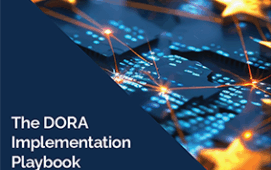The 13 strong, Sifma led coalition of industry associations involved in providing feedback to the regulatory community regarding the establishment of a new global legal entity identification standard has finally produced its comprehensive list of requirements for the ID. The group has also set a deadline of the end of this month (30 May) for the submission of proposals by technology providers that wish to provide services to support the establishment of the new ID and the Office of Financial Research (OFR).
Back in February, Sifma hired PriceWaterhouseCoopers to support this work and evaluate all the vendor offerings out there on the market to be able to meet the July deadline for establishing such a standard. Now that the requirements for the standard have been whittled down and collected (via three in person meetings and weekly phone and web-based discussions between the associations’ members over the last couple of months), the group has released its shortlist for market approval and comment, ahead of its final recommendations. The group is now asking for interested vendors and other parties in the market to submit proposals for providing the LEI solutions to LEIresponse@sifma.org.
According to the associations, the requirements are intended to be a “living solution that will continue to be refined as others participate in the discussion,” in other words, a perpetual work in progress. After all, standards must adapt to new developments in the market, such as the creation of new instruments and regulatory developments. In the meantime, however, this document is aimed at sparking industry debate on the subject amongst regulatory and practitioners, ahead of the July deadline for the mandatory introduction of the entity standard in the US.
The group is hoping that this process will, in the longer term, facilitate the “refinement and convergence” of the currently separate approaches by those developing potential solutions for the LEI standard, as well as prompting their immediate bids for the technology provider job.
The group’s proposed requirements contain details of: the scope of the ID’s coverage; some definitions underlying the data model; the potential operating model (how the registration and maintenance process should proceed); a governance model (involving a committee and the solution provider); the funding and business model; potential implementation phases; compliance requirements to be included in the regulatory mandate; and some of the technical principles such as the data architecture and technology management principles.
The six guiding principles underlying the proposals include: supporting the goal of monitoring systemic risk by regulators; ensuring global and regulatory coordination; designing a pragmatic and iterative solution (that can be expanded over time); encouraging legal entities to register (via a mandate); and providing easy and free access to the data. The group has therefore split the document into eight separate components, each tackling another facet of the new regime.
As for the new ID itself, the group indicates that it should include certain mandatory attributes: the ID itself (obviously); exact legal name; address; country of formation; legal form; ultimate parent; its status (whether it is available or has been disabled); and other metadata (such as the date is was issued, last updated or disabled).
It is interesting to note that the country of formation has been included in this, given that it was a fairly contentious issue to begin with (and one of the reasons why the Swift BIC code fell by the wayside), but this is likely to mean that this country specific data will be captured as part of the overall model rather than embedded within the code itself. It is also interesting to note that ownership has been defined as holdings of “greater than 50%,” thus making the job of tracking minority shareholders obsolete. However, given that the goal of the regulators is to monitor systemic risk, this bar seems to be rather high for percentage ownership. Practical considerations around tracking the data have compelled this decision to be made, but will this prevent regulators from spotting vital correlation and counterparty risks?
The industry is, for obvious reasons, championing a self-registration model, whereby entities register themselves for an ID and certify the data on at least an annual basis. This puts the onus on the entity itself to ensure data quality, which may prove a challenge further down the line for the OFR. However, the group has recognised that some parties may not be willing to register and thus has come up with a contingency plan during the implementation phase, where the registration body has an alternative method to register these entities.
The group has also noted that it is “agnostic” to whether the solution provider is not for profit or from the private sector (another interesting development, given the regulator’s original bent towards a not for profit provider). It has, however, retained the ideal of a “cost recovery basis” for funding via a “basic annual fee paid by each legal entity that obtains an LEI as well as other potential fees for customised services”. This question of cost, no doubt, will be a key consideration in its selection of an appropriate technology provider and is directly referenced by the group under the title “financial wherewithal”.
The group of associations leading the charge comprises of: the British Bankers Association, JWG’s Customer Data Management Group (CDMG), the Clearing House Association, Enterprise Data Management Council, the Financial Services Roundtable, the Futures Industry Association (FIA), the Global Financial Markets Association (representing the Association for Financial Markets in Europe (AFME), the Asia Securities Industry & Financial Markets Association (ASIFMA) and Sifma), the Global Regulatory Identifier Steering Group (GRIS), the Investment Company Institute (ICI), and the International Swaps and Derivatives Association (ISDA). A total of 43 firms have participated in providing feedback to the group thus far, alongside 21 trade associations (five of whom are from the Asia Pacific region).
Subscribe to our newsletter




